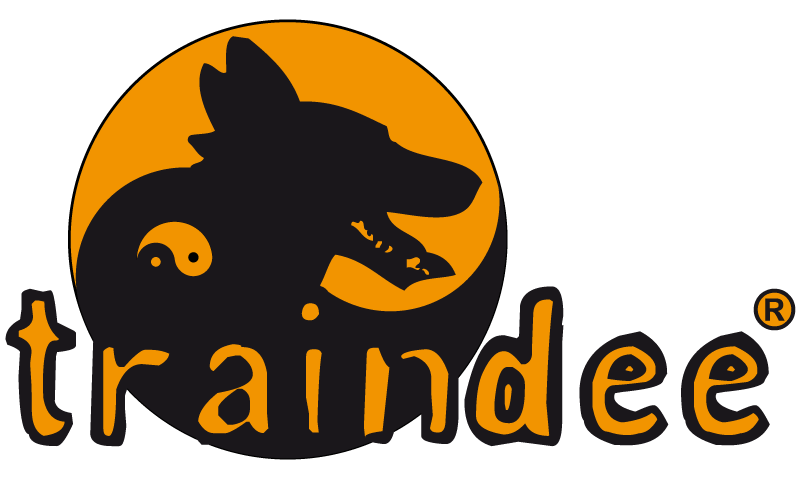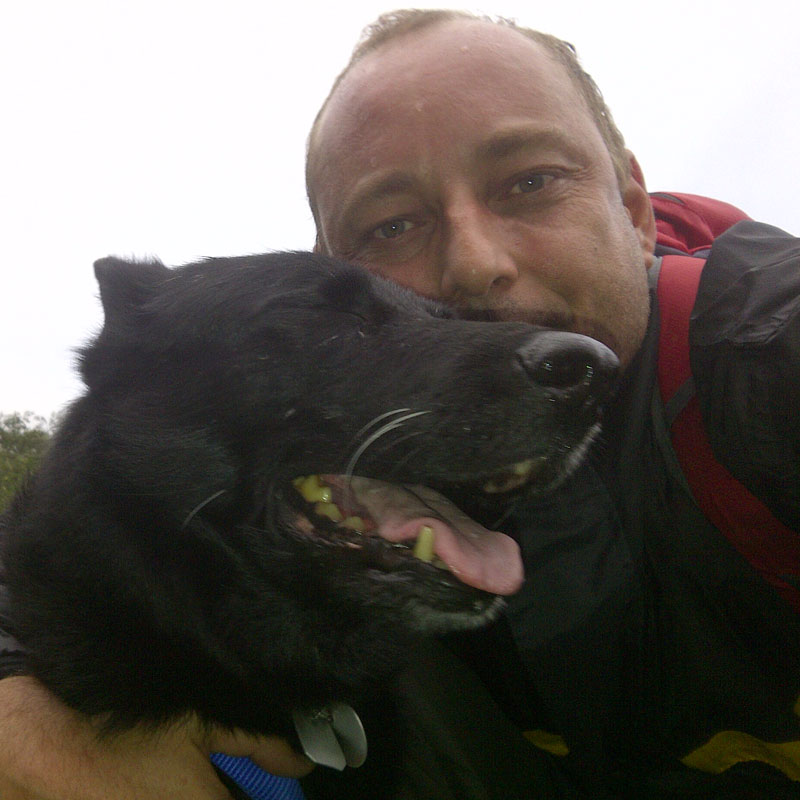It was the term “imprinting”, referring to Konrad Lorenz, that prompted me to write this article. Imprinting in the dog, I will still consider in a separate article.
It was a statement of a dog trainer, whom I do not know personally, but him because of its open kind also somehow estimate. This mixture of common sense, practicality and equally sound knowledge he imparts.
But a statement with reference to the topic of imprinting has just made me think, you can read in the article 👉 “Imprinting in dogs – as a consideration for training and living together?”
Now to the dogs from animal shelters and why they have imprinted me so much – in a positive sense, I think.
“Your dogs have character” – I had been told that by several people, in their lifetime and beyond. A lovely compliment, almost more moving today than it was then. And no, it was not meant sarcastically, as one might say in a weakening way “the dog is quite reactive”, when perhaps coarser problem behavior could be behind it.
Rhea and Merlin, my two black shepherd mix from the shelter, I had already written about them in another post. They were not easy, although today I understand many things better and could proceed more purposefully, with some rather undesirable behaviors.
Then the “care” dogs from the shelters, a few I still remember very clearly. Carlo, Amigo, Philip, Wasti, Aaron, Kira, Emma, Nora, Felino, Morti, Chelsey, Blue, …. I have the face of many more in my head, but I don’t remember their names. Fantastic characters, each in their own right and worth spending time with. But the personal bonds diminished over time, it was almost routine that crept in. Observing behavior, recognizing it and “going ahead” according to the repertoire of lessons learned and experience gained.
But what was this creeping in “proceeding” actually, which came more and more into the foreground? The dog pulls on the leash – it should not. The dog shows hunting behavior – it should not. The dog jumps at other people – it should not. The dog eats everything from the ground – it should not. The dog reacts aggressively to other dogs – it should not. And of course this goes on forever….
The dog training and the dog education stood suddenly in the foreground.
And it is exactly these shelter dogs, where you could not proceed according to Schema-F mostly, you just had to wonder often. Of course, there were also “just new breeds” that you were allowed to get to know. Carlo for example, a Pit or Amstaff mix, no one could be so specific at that time, who had often presented me with challenges. He showed and taught me a lot but above all that his will and his urge were often simply stronger than even the most positive confirmations to be able to stop him from one or the other behavior so easily. But this was not only Carlo, there were enough examples of other breeds.
Carlo had equally much to do with praise as with food in the sense of “treats”, but “praise” was not “cuddling” as I knew it from my own dogs and I write now extra not “knew from sheepdogs”. Praise and body contact, oh yes, that could make him “turn up”, he had shown that in a picture book way. It will be here probably more the personal past of the individual decisive than a genetic predisposition, as I was allowed to learn. Nevertheless, some things I found, at least at that time, as obviously “typical” for a breed. Just as it had been conveyed to me.
A new dog book just came to my mind and somehow I am convinced it must be a very good and, above all, very practical book. I am not writing the title now because I know the authors personally and I am not sure if they would appreciate being mentioned with their names at this point. I will certainly still buy it, almost have to look for the appropriate event to get me a personally signed copy. Because I was allowed to get to know all these people at a very “intense”, exciting and moving time for me personally and I will still like to think back to this time in 30 years.
“Influenced by shelter dogs” – how I mean that now concretely? Well, it has helped me to an “open” attitude, anyway an aspect that I would just see as corresponding to the spirit of the times.
I’m showing you something, I’m showing you one way, maybe one of many. It doesn’t mean that it has to work for you, that you have to do it this way and that only this possibility is the only right one. I give you something, I teach you something, of course based on experience and what I have learned.
Of course, we can differentiate here as well. Some “industries” and areas change faster than others. Pi is just Pi and mathematics, physics and chemistry, I can not see now so simply “flexible” as well as geography and climate zones. That’s just the way it is, at this point in time. But perhaps the application of facts, I can possibly still creatively. And even the physics, could change by recent discovery in the particle research possibly also once again fundamentally….
This may also be necessary if we want to teach or demonstrate something to a group of 10 human-dog teams. There it needs a clear line, otherwise there is no end. Above all, many people also need a clear line at first and simply cannot follow the broad experience horizon of the animal trainer immediately and in full. Most of us will feel the same way with every new topic.
And it may also be that, all in all, a very few approaches simply work in most cases. Hence the title, coined by shelter dogs.
Because you simply have more to do with the “runaways” who don’t fit into a scheme. Because maybe that’s why these dogs ended up in the shelter and don’t “work” the way most do. Of course, there are also the tragic cases that have become so only through a traumatic experience and were previously quite “normal” dogs. But even these, you have mainly sit in animal shelters.
And it is exactly these experiences that make me deny statements like “believe me, your dog likes the treats more than your praise”. Simply because I have already made other experiences and can clearly say that this is not the case. Of course, on the whole it will be like that, of course the positive confirmation with food (treats) works mostly and then also very well, but there are also exceptions and I think that should not be underestimated. Just to this example, there should already be another study that attributes less or less sustainable effects to a confirmation via food than via praise and attention. But well, studies again, let’s just look at the individual and then decide.
Yes, they have shaped me, the shelter dogs. I am critical, probably mostly pedantic, because the subject is important to me. Too important and it just annoys me how especially people from the dog subject so emotionally and stubbornly often try to generalize. Perhaps often because of one’s own comfort zone, which one does not want to leave or simply cannot leave. It is teachers no different, basically it works, but some individuals remain because they are not like the 20 or 30 others in the class but for the time is missing.
I am impressed because I was allowed to recognize how “simple” and “unproblematic” many dogs are. It was almost scary to me, I was not used to it. And there was a phase when I thought I would no longer take a dog from the shelter, because it had become too “exhausting” for me to have to constantly and 100% pay attention to his sometimes problematic whims. No it should be one with good puppy training and socialization.
Ah, wait, I’m catching myself there. I’m not thinking about a puppy obviously. I’m thinking of “making up” for something that was screwed up at some point.
But I also realize that I would never have been interested in buying the offspring of “Donnerschlag vom Teufelsstein” paired with “Princess of oriental beauty” (I hope that none of this really exists now, if it does – mea culpa – I didn’t mean it badly, I am aware that the whole pride of the breeders is in these names! Not that I have something against good and responsible dog breeders, on the contrary, this is a science in itself and a lot of work / effort, if you do it conscientiously. I have simply never actively looked for it until now, while in the back of my mind are present the many dogs that deserve a good place.
No breeder, no breeder can guarantee that we will get a dog from them that will never have health problems. They can minimize risks, perhaps eliminate some, but enough real world examples have shown me that nature simply remains nature and we have to deal with her whims. Perhaps sometimes on the subject of breeding may be thought of the novel “The Purple Rivers”, to avoid worse…
Dog breeders satisfy a need, especially when it comes to performance breeding, or let’s say when it comes to dogs that will have a certain working use. But here I do not want to use inappropriate terminology, you surely know what I am talking about. The buyers simply appreciate certain characteristics of breeding lines, on which one will probably be able to rely as a rule. But it is, as always, the exceptions that confirm the rules 😉
And such dogs, the exceptions, may then end up in the shelter, although they might have fantastic abilities that could be used for “work”. Maybe not to the originally intended use, but possibly another, or just to be a dog.
I remember such a shepherd dog in the shelter. I wonder what happened to that sweet mouse? She was probably unsuitable for protection, whatever her true story was, and she did have a bit of a bang, yes, she did, but it may have been trained into her. Anyway, she had an incredible nose and also clearly the drive to nose work, for someone looking for just such a dog, a bull’s eye. A bull’s eye from the shelter, not from a targeted breeding.
I also find quite interesting a certain “new attitude” of people that I had heard for the first time in comments about dog giveaways from shelters on social media.
“Why isn’t the dog returned to the breeder, they have to take it back if it has this or that”
Yeah how do they think of that?
Like a broken car, either I can fix it or I have to take it back? But there you would have to be able to prove someone very negligent behavior in breeding. And even then, what do you think will happen to such a dog….? Hopefully he still ends up in the shelter and gets another chance.
Shelter dogs have influenced me and that will be recognizable in my posts. Recognizable, because I do not want to generalize and to me topics around the dog are too important, as that I do not want to leave casual statements, which could be seen and heard above all by many people not of the specialist, so simply in the room. Especially if we call ourselves trainer or trainer, we should also make the effort to remain accurate and be open to differentiated consideration.






